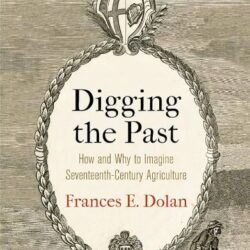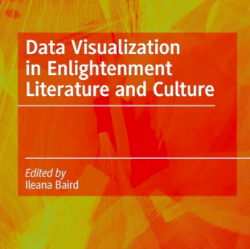The goal of Digging the Past is stated early with the question, “Is it possible to approach the seventeenth century, in its failed proposals and successful ventures, as a resource for imagining future agriculture in fruitful ways?” Frances E. Dolan seeks to answer this question by offering “a fine grained case study that proposes to enrich our understanding of the value of the past. (page seven) The method consists of examining the letters, diaries, notebooks, botanicals, pamphlets, as well as plays, poems and ‘how to’ guides. Among the topics subsequently covered are histories of food and work, literary criticism of the pastoral, histories of elite and vernacular science, of reading and writing practices and so on. This leads to an examination of agricultural topics such as composting and soil amendment, local food, natural wine and hedgerows. Along the way, we also encounter such varied topics from Shakespeare to cannibalism. An extensive and well documented bibliography testifies to the wide-ranging scholarship that supports this book.
Tag: literature
Ileana Baird, ed. Data Visualization in Enlightenment Literature and Culture.
Over ten finely documented and illustrated chapters, Ileana Baird and her twelve contributing writers offer scholars of the long eighteenth century (1660-c1800) a timely high-tech methodology: graphical conveyance of information. Baird’s new book, Data Visualization in Enlightenment Literature and Culture (2022), demonstrates the utility of content imaging. Baird and her writers have constructed datasets of research on selected topics in visually accessible designs: graphs, tables, figures, tabulations, charts, clustering, topic modeling, network graphs, data mapping,
David Letzler. The Cruft of Fiction: Mega-Novels and the Science of Paying Attention
In this thought-provoking, well-written study, David Letzler combines computer science and information theory with genre criticism to propose an innovative way of theorizing reader response to the excesses often found in postmodern and some modern mega-novels. These are “the extremely literate, erudite tomes around which one must plan one’s life for a month” (1) by such authors as Thomas Pynchon and David Foster Wallace, as well as James Joyce. Acknowledging that reactions to these novels range from passionate admiration to dismissive scorn, Letzler aims to delineate the ways in which they require modulation of readers’ attention and, in so doing, provide practical lessons for the information age.
Loren Glass, ed., After the Program Era: The Past, Present, and Future of Creative Writing in the University
After the Program Era, as Glass describes it in the introduction, “explores the consequences and implications, as well as the lacunae and liabilities, of McGurl’s foundational intervention” (1). After the Program Era considers sites and genres outside McGurl’s purview – poetry, electronic literature, creative writing in transnational contexts, creative writing programs at the margins. The collection consists of an introduction by Glass, 14 essays, and an afterword by McGurl. The 14 essays are divided into three parts: I. Antecedents (writers and institutions that pre-date the post-World-War II Program Era); II. Revisions (writers and institutions contemporaneous with the Program Era that complicate or challenge McGurl’s thesis); and III. Prospects (the future of creative writing). The essays are universally strong, and Glass’s introduction and McGurl’s afterword provide the necessary historical and critical context for thinking about the essays together and for thinking together beyond them.
Matt Cohen. Whitman’s Drift: Imagining Literary Distribution
Matt Cohen. Whitman’s Drift: Imagining Literary Distribution. Iowa City: University of Iowa Press, 2017. xvi, 269p., ill. ISBN 9781609384760. US$…




